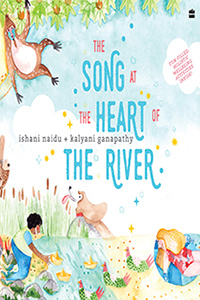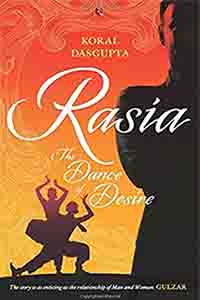“Tradition or otherwise the story makes a statement on environmental togetherness that is invaluable.”
NO MAJOR SPOILERS
The core of this colourful book is the story of a river and how it transforms the lives of people with its joyous flow. It introduces children to the tradition of greeting the sun every morning which was an integral part of the Vedas. Much of it city children would not be aware of, or if they are there is the need to remind them. A river nurses a bio diversity of plants and creatures on its banks, it lends its ripples for children to float their paper boats.

The river in this book comes to life like a young happy spirit after a shower of rain during a trying winter and tries to bring joy to the people who rely on it but ends up exhausting itself. Naidu and Ganapathi’s message is that the river too is a living being and that it needs to learn, as children and adults do, that excess it not a good thing. Life is a matter of balance. Through the river are explored leanings of ayurveda and Vedanta which are delivered in a fashion that children can understand. Despite the classical Indian traditions tactfully explained in the book, there is a distinct link to Robert Louis Stevenson’s poem Where Go the Boats in the colours, the rush of joy and the flow of life that children love.
The book is a handy size for younger children, designed to attract them with colour and easy to grasp with a thoughtful adult at hand. There are pages explaining these theories at the end along with exercises and activities that parents can share. Tradition or otherwise the story makes a statement on environmental togetherness that is invaluable.
Reviewed by:
Anjana Basu
Added 28th May 2020




